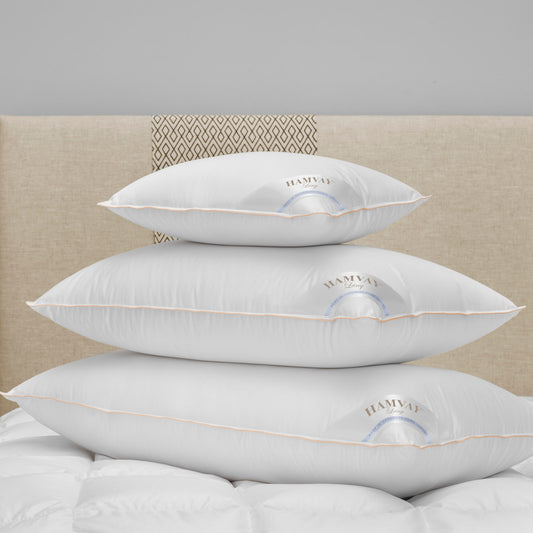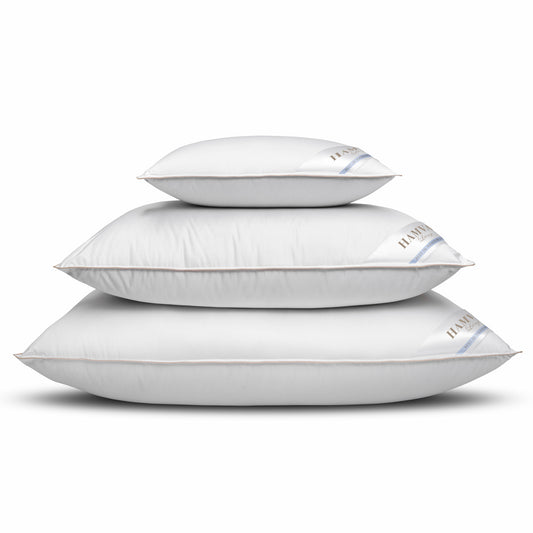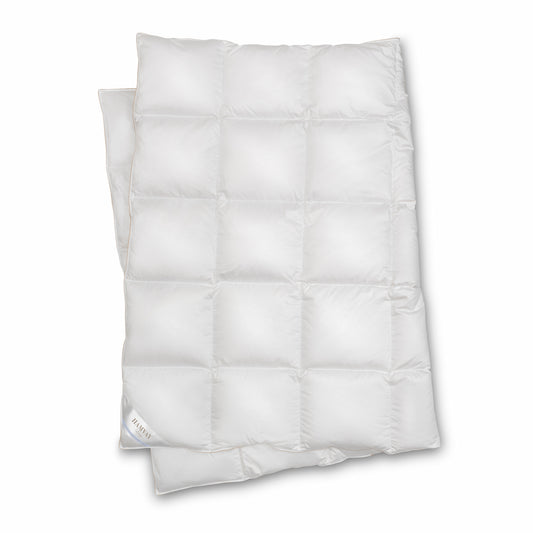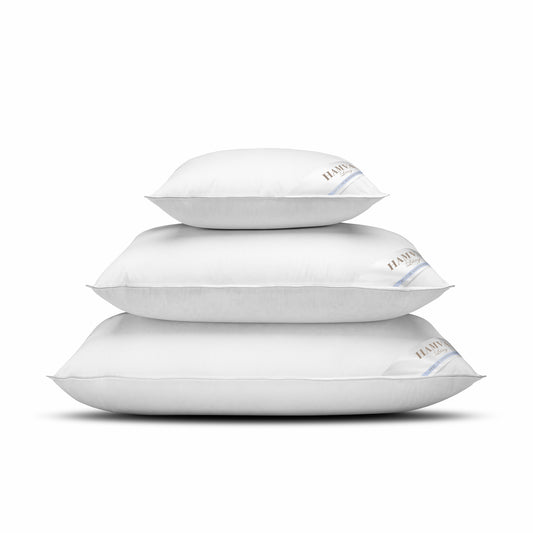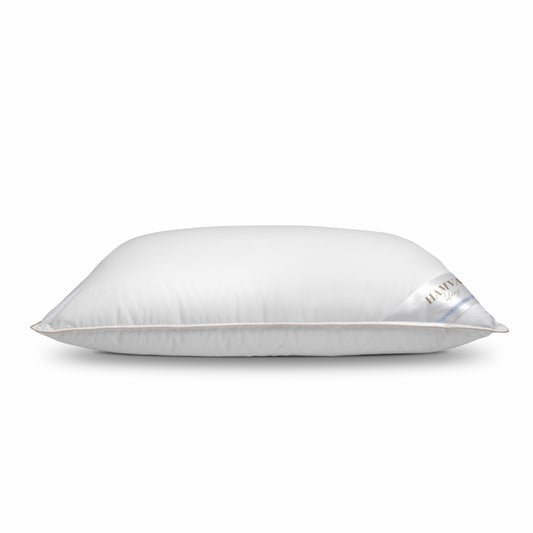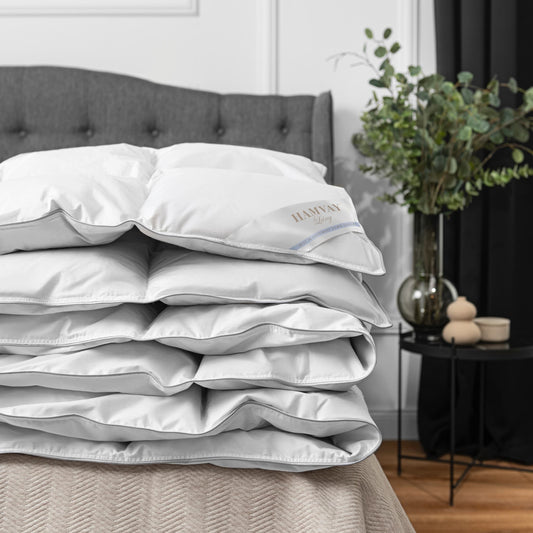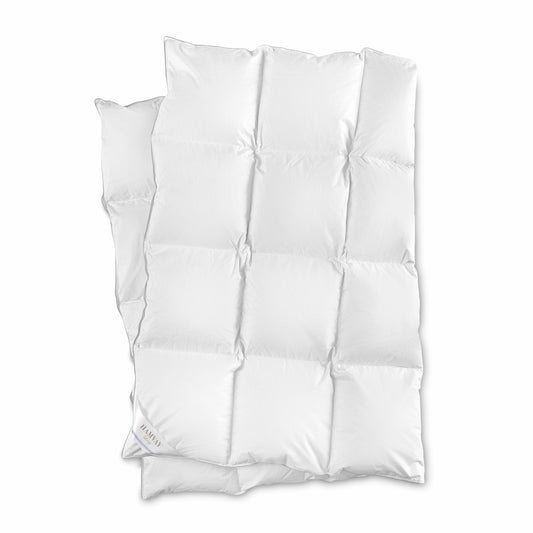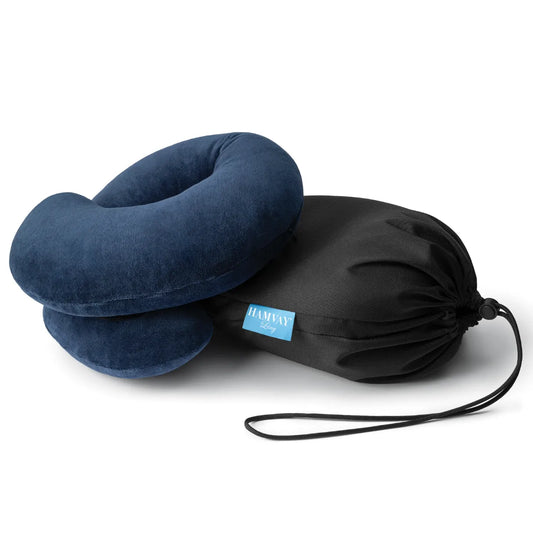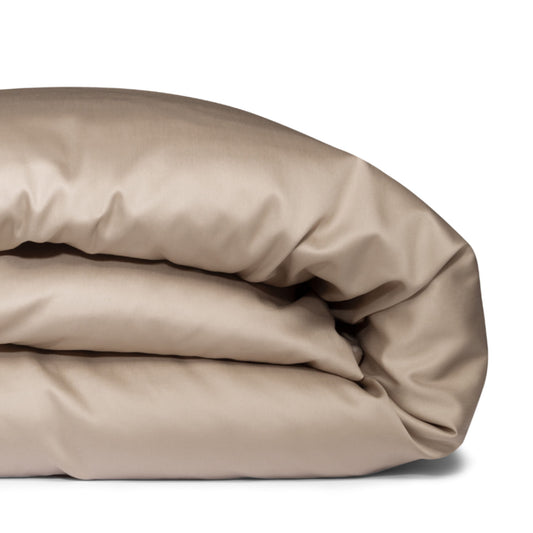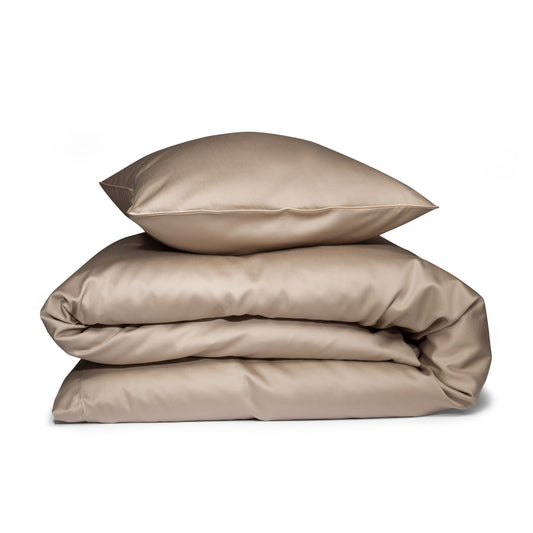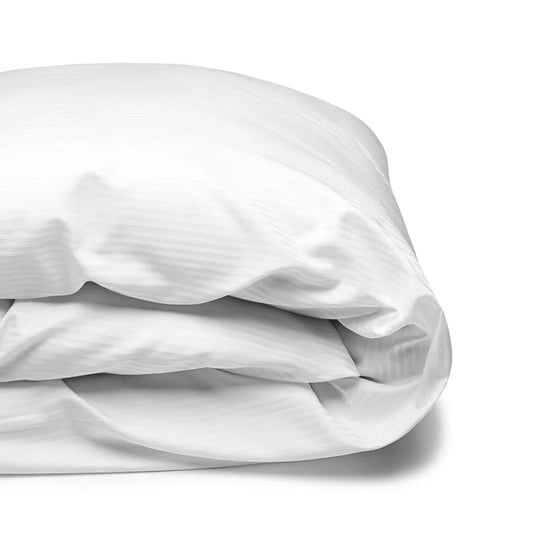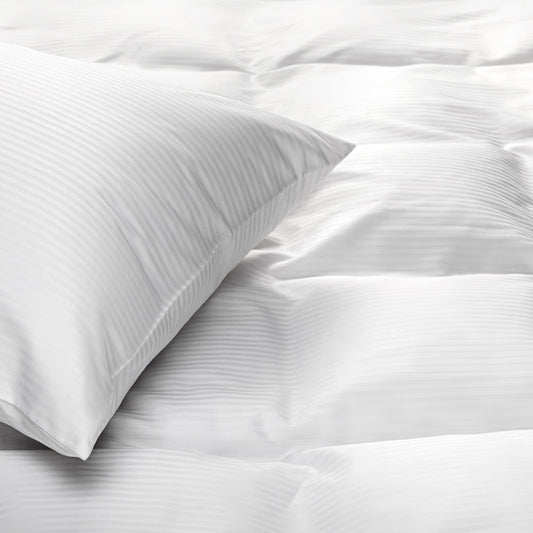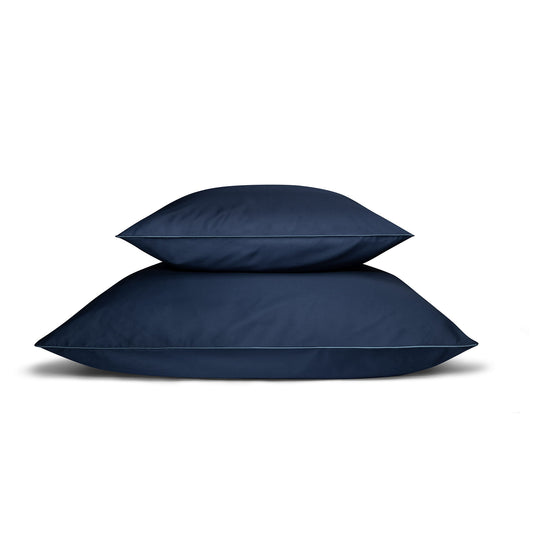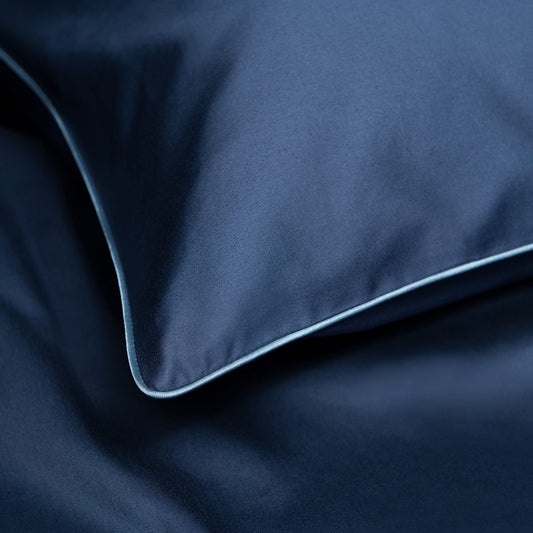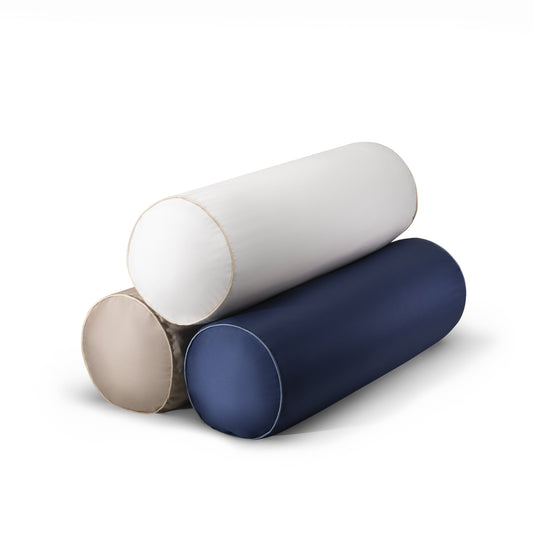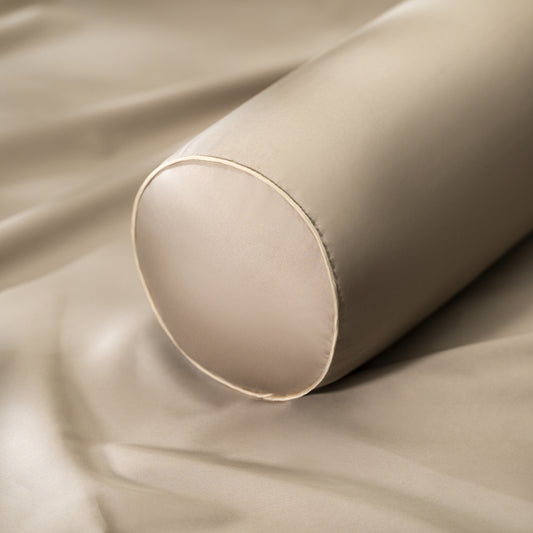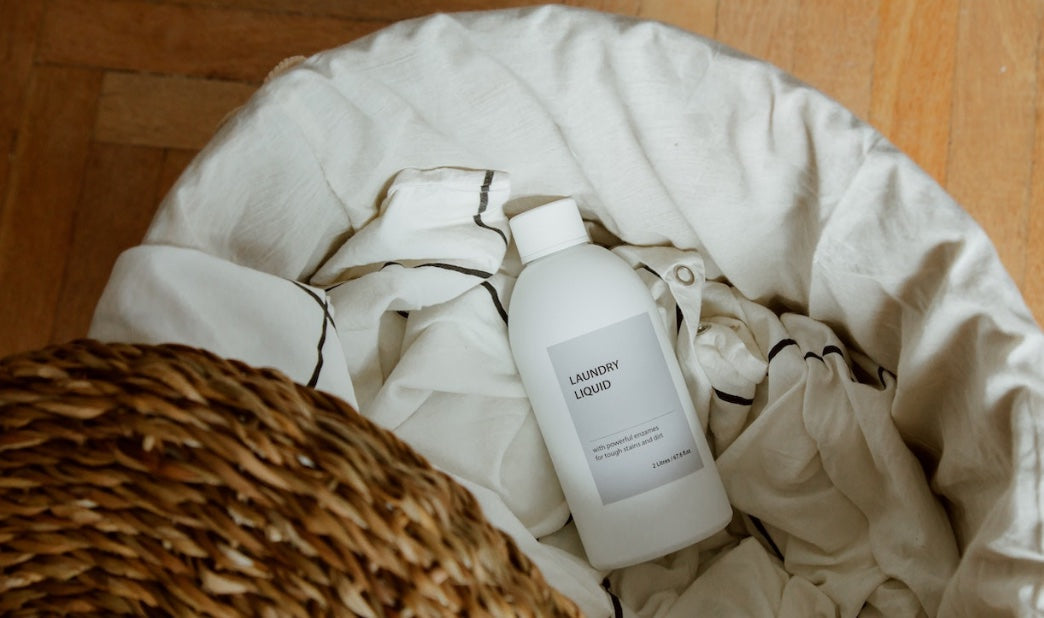
Useful Tips for Washing Down Comforters
Share
Cleaning a down comforter is not a task many homeowners often consider. However, to get all the comfort and coziness of a luxurious comforter, it’s vital to wash down comforters at least once per year. For home washes, you can use the washing machine, but you have to be extra careful not to damage the integrity of the comforter.
This article shares all the tips and tricks you need to know before washing down comforters at home for the first time.
Main advice from Hamvay-Láng
Even though it is possible to machine wash your comforters at home, we always strongly recommend taking it to a professional launderer who has more experience with down bedding as it is easier and worry free.
Washing Down Comforters at Home
Regular down comforter washing is important for multiple reasons. Down comforters are valuable bedding pieces meant to be a lifetime investment. Maintenance is crucial to fight wear and tear.
It’s recommended to wash the comforters with duvet covers once every three years. For comforters without a cover, it’s advised to wash them every year.
Many homeowners are afraid of washing the down comforters at home. They think they’ll wash away the feathers or compromise their integrity. But there’s no reason to be afraid. Down can benefit from gentle washes.
If you’re wondering whether it is possible to wash comforters at home, the answer is simple: Yes, as long as the washing machine is large enough to fit the comforter. Not all laundry rooms have such a large capacity for a king-sized comforter. If you encounter this problem, you can take it to the local laundromat to have the bedding professionally laundered.
Things You’ll Need for Washing a Comforter
- A washer and dryer set
- Enzymatic cleaners for stain and spot treat
- Gentle laundry detergent or laundry soap
- Wool dryer balls or a sock with two tennis balls to prevent the down from bunching
- Stain brush
Things to Keep in Mind When Washing a Comforter
- Water temperature – cold or lukewarm water prevents shrinking the fabric
- Wash cycle – best to go for delicate or gentle cycle settings
- Soap – gentle options, no additives
The Best Way to Wash a Down Comforter

It’s best to wash a down comforter in a front-loading washing machine. Top loaders should be avoided, especially the ones with center agitators because they can damage the down and stretch the materials.
1. Pre-Treat
If you have a duvet cover, remove it. Check the comforter for tears and stains. It’s important to sanitize the damage before washing to prevent losing the down.
Use a stain treatment method you prefer to remove any stains from the comforter. Food spills and sweat-induced yellowing are best treated with enzyme-based removers. Just apply some to the stain and use a stain brush or your fingers to work it into the fabric.
2. Load the Washer
Place the comforter in the washing machine and spread it as much as you can. The comforter shouldn’t be crumpled or folded. You can wash the cover separately from the insert.
3. Add Socks With Tennis Balls
Stuff two socks with clean tennis balls, tie them and insert them into the load. This will keep the insert from bunching. It’ll also add some more agitation to remove the sweat, dirt, and body oils from the item. You can use old dryer balls for this purpose as well.
4. Add Laundry Detergent
The next step is to add the mild laundry detergent of your choice to the soap dispenser. The important part is to only put half of the average load amount. Otherwise, the down can get soap-stiffened. Also, you shouldn’t add bleach.
5. Set the Cycle
Use a delicate or gentle cycle (depending on your washer or the laundromat). If there’s an option for it, set the washing machine for an additional or extended cycle for rinsing.
6. Run the Washer
Now you can turn on the washer. Wait until the machine runs the full cycle.
7. Look for Soap Residue
After the cycle is done, look for the remaining soap on the bedding. Should there be any leftovers, you can rewash them without adding the detergent. It’s important to get rid of the soapy residue because it can create clumps in the down.
8. Remove the Bedding Carefully
Down comforter removal from the washer can be tricky. Given that wet comforters are heavy, be careful not to rip them off. Also, don’t worry if you notice a slight odor from the down. It’s completely normal and will go away as the bedding dries.
How to Dry a Down Comforter
Drying a down comforter is best done in a dryer.
Use the detailed steps below to dry your down comforter like a pro.
1. Place the Comforter in the Dryer
The important tip here is to spread your comforter as much as you can inside the dryer. Then, drop in wool dryer balls or socks filled with tennis balls inside. As the balls beat during the drying process, they’ll prevent the down from clumping. You can also add one fabric softener sheet on top of the comforter.
2. Start the Dryer
Use the lowest possible heat option and start your dryer. A down comforter that gets too hot can scorch, so don’t dry it at a high temperature.
3. Check and Fluff
Stop the machine every 30 minutes. Take the comforter out and fluff it very gently. This way, the down will distribute evenly.
4. Continue Drying
At this pace, a comforter will completely dry in three hours at the very least. It’s important to keep drying cycles going for the bedding to avoid mildew buildup and moisture odor. The down filling should feel light and spread evenly across the comforter. This is when you’ll know it’s dry.
5. Make the Bed
The final step is to get the comforter back to bed. If you use a cover, only insert the comforter inside the cover when the bedding is 100% dry.
Handwashing Down Comforters
Not everyone has access to a washing machine that can fit a large comforter or a nearby laundromat, but this doesn’t make washing down comforters impossible.
You can wash a comforter in a bathtub and even in a large sink. Just make sure both are clean before you place the comforter in them.
If there are any stains on the comforter, it’s best to rub that area and put the detergent on it for up to 20 minutes. After removing the stains, you should fill your sink or tub with warm water. You can add a bit of gentle detergent that’s safe for down and mix it in the water.
The important part is to gently agitate the comforter with your hands into the water. Avoid wringing or twisting the bedding because you can damage it.
It’s best to leave the comforter for up to half an hour soaking in the water. Then, you can drain the water and press down the comforter to get rid of excess water. If needed, repeat the washing cycle using only water to remove excess detergent.
As far as drying is concerned, you can either put it into a dryer as advised above or air dry the comforter.
How to Make Down Comforters Last Longer?

Due to their unmatched durability, down comforters can last from 10 to 20+ years if treated and maintained with care.
The lifespan of a comforter depends on many things:
- The quality of the comforter
- How often it is used
- How often it is cleaned
- Whether it’s cleaned properly
- Whether it has a cover
- Whether you have pets on the bed
- How you store it
Down Comforters: Protection and Daily Care
A quality down comforter can be quite an investment. Once you purchase it, it’s essential to take all the necessary measures to keep it nice and clean. Here are quick tips to help protect your comforter:
- Use a cover for protection against dirt and dust mites.
- Wash the cover every month or even more often if you have pets.
- Fluff the duvet every day to keep dandruff and dust away and maintain the shape.
- Have any soiled or stained areas spot-cleaned between washing.
- Store the comforter in a breathable fabric bag or wrap it loosely in a sheet.
- Never store in plastic bags, and don’t vacuum pack the comforter.
- Wash the comforter one to three times each year.
Finally, if you notice empty spots in the comforter as you spread it out at room light, it may be time to consider a replacement. Comforters that lose too much (or all of their) down don’t provide value or comfort anymore.
Washing Down Comforters: Explained
Washing and taking care of down comforters doesn’t have to be complicated. Although some delicacy is required, washing a comforter in a washing machine or laundromat is fast and easy when you follow the steps provided in this article. And if your laundry room is too small for the task, you can always have the comforter professionally laundered. The important part is to take proper care of your bedding so you can use it for as long as possible.
